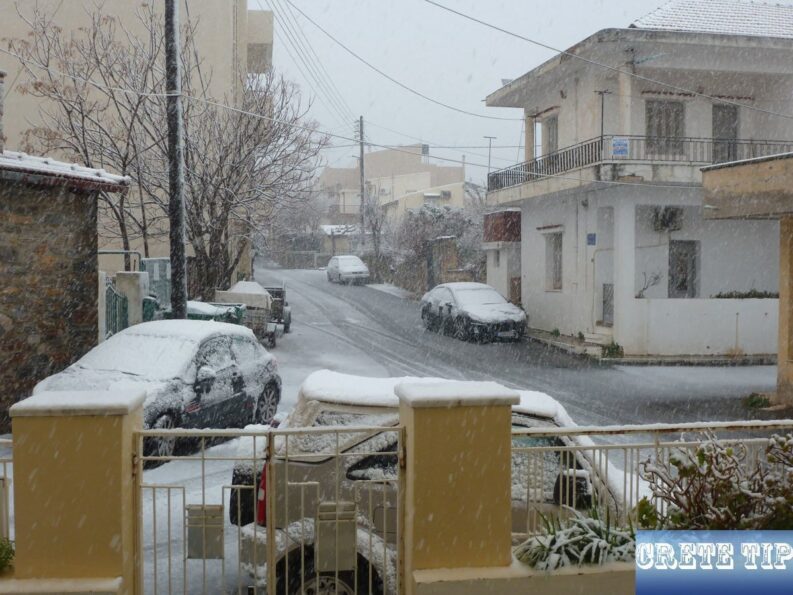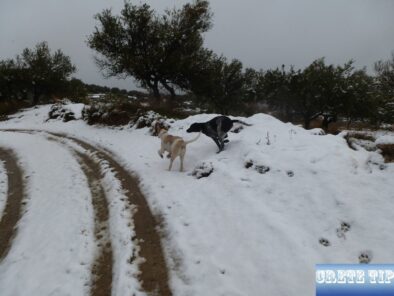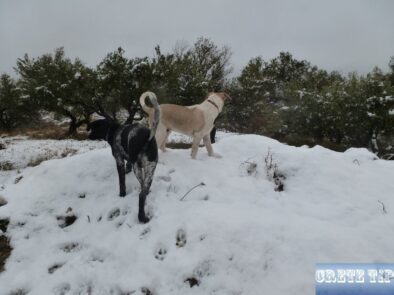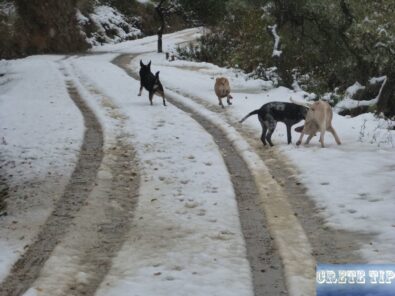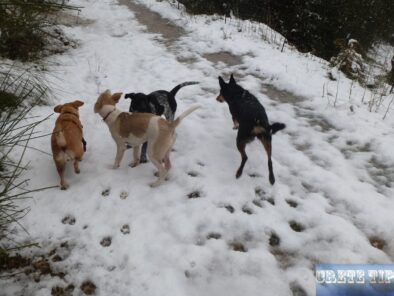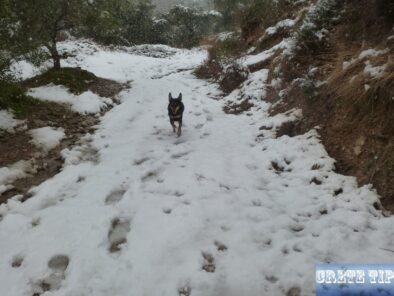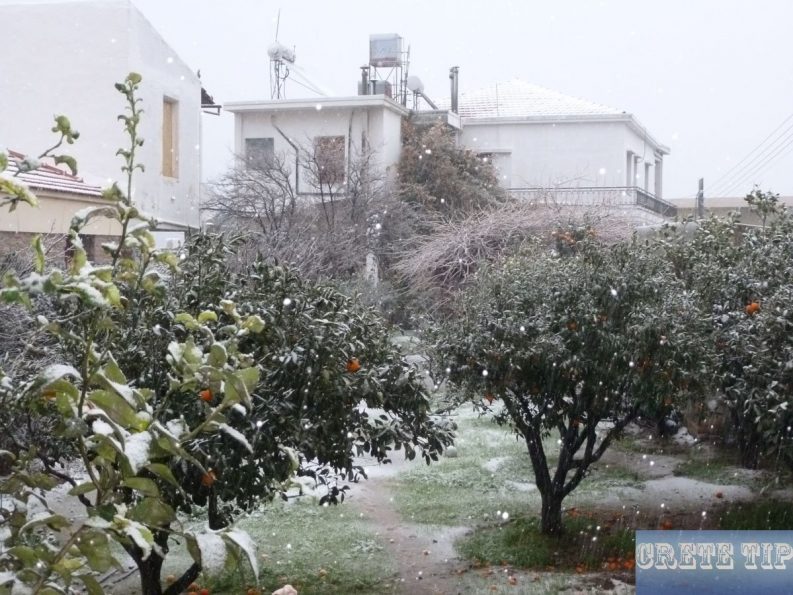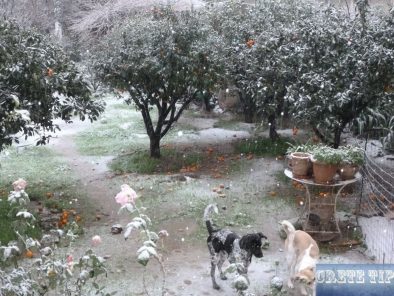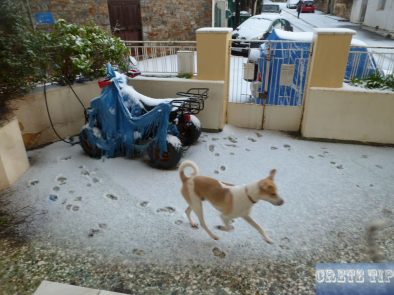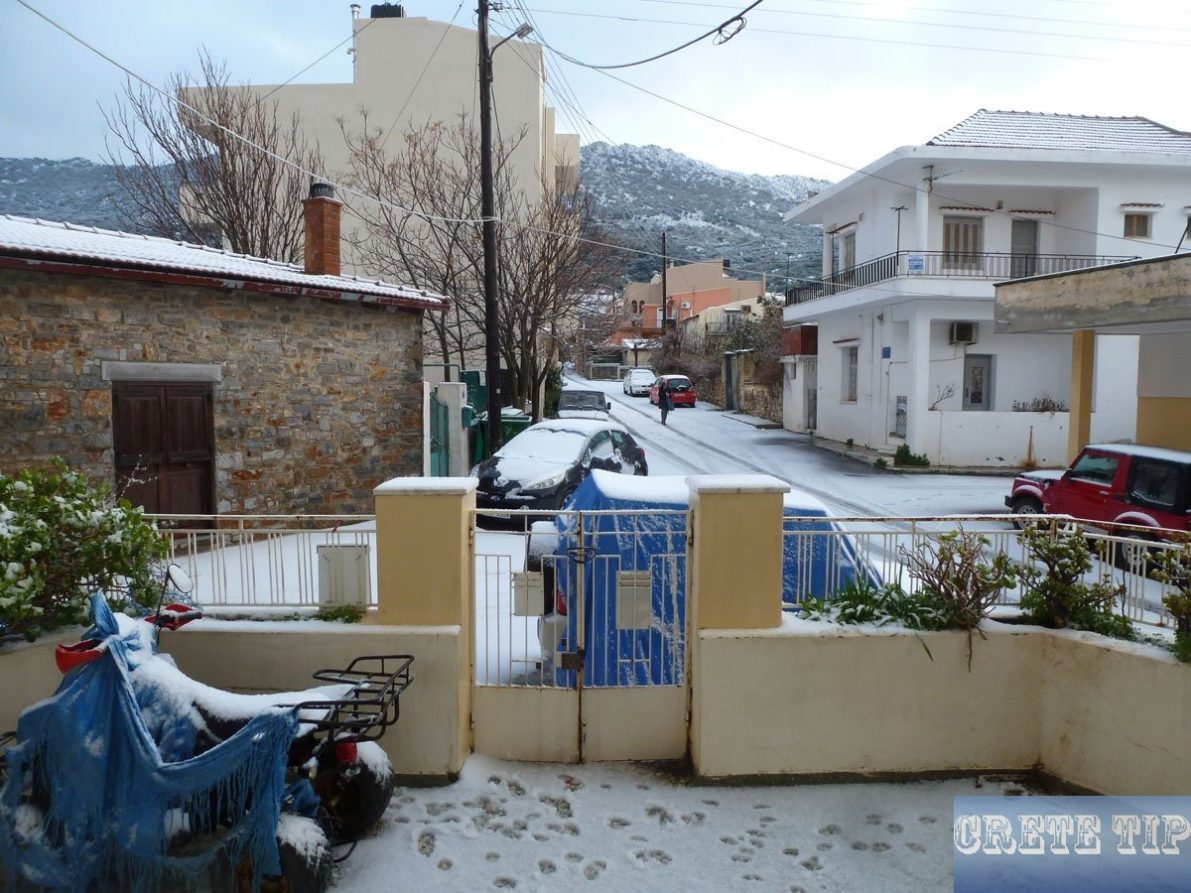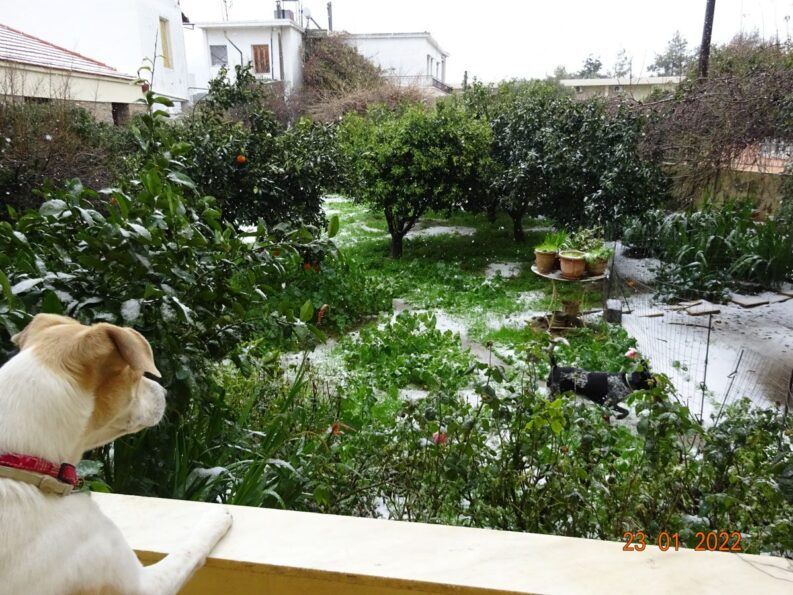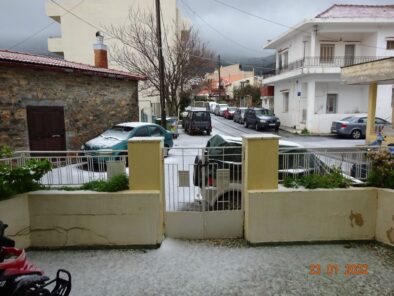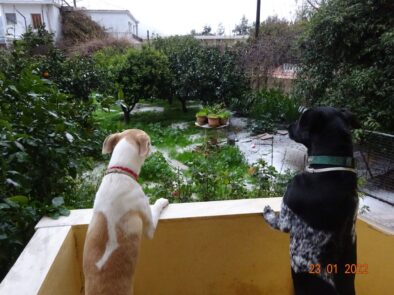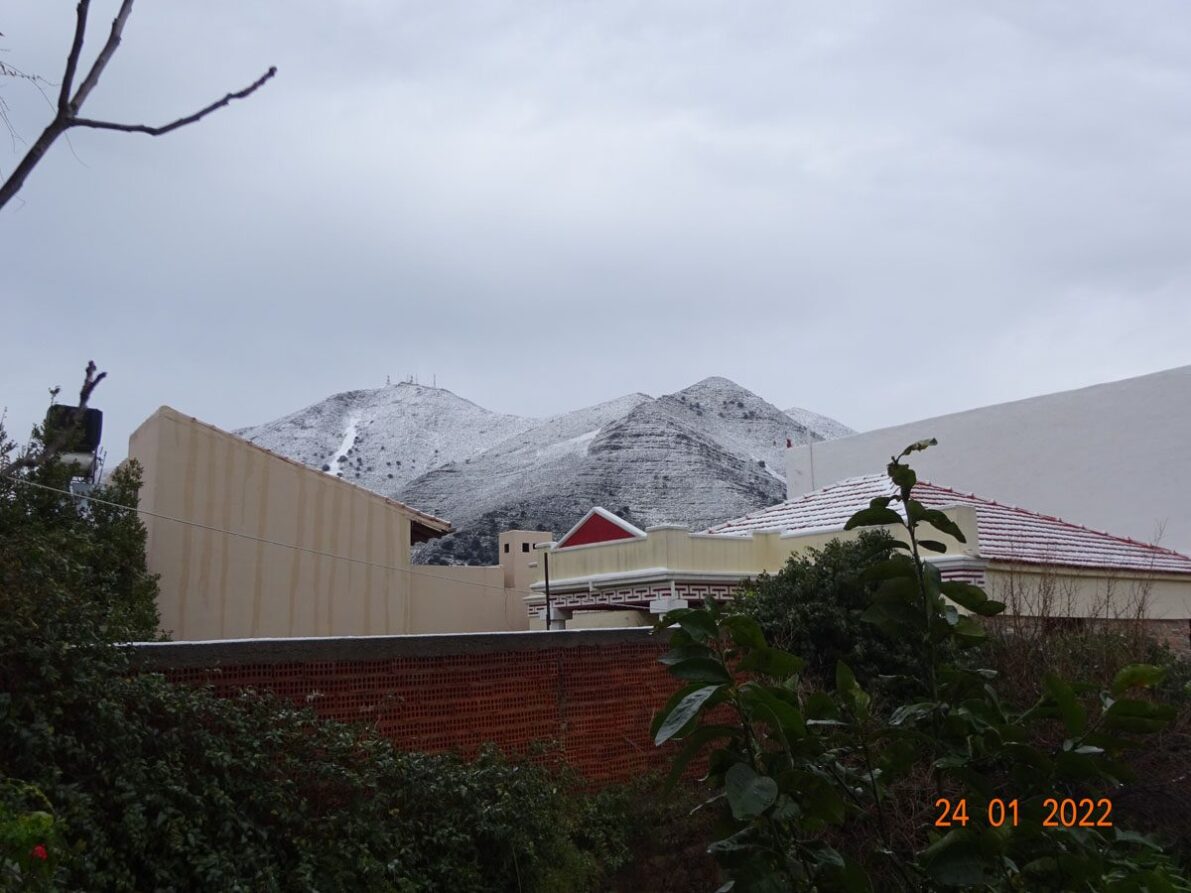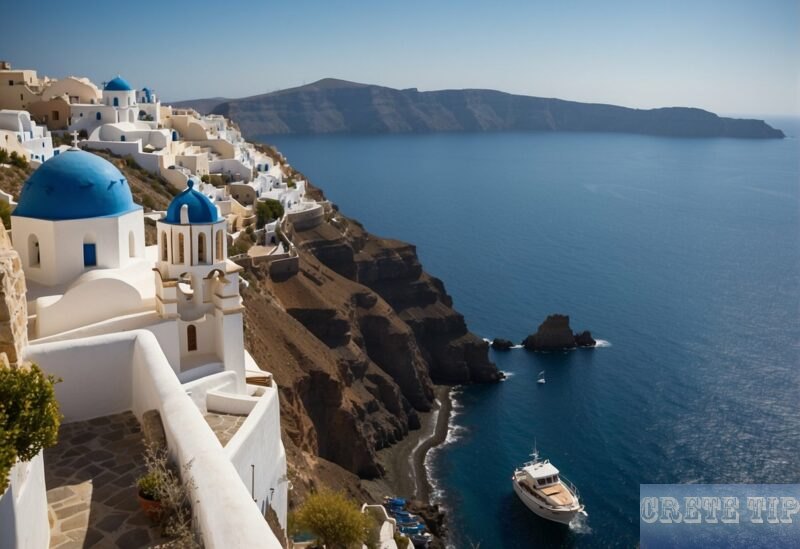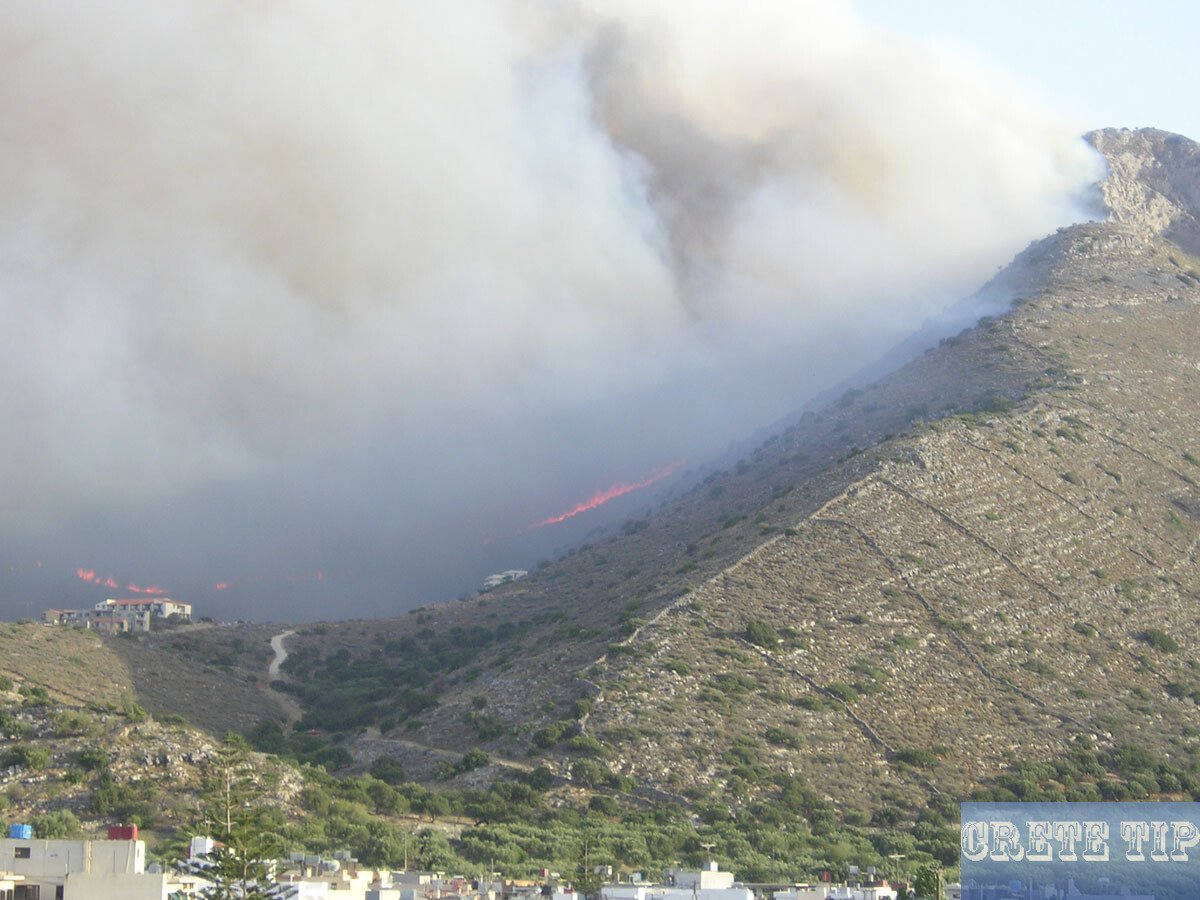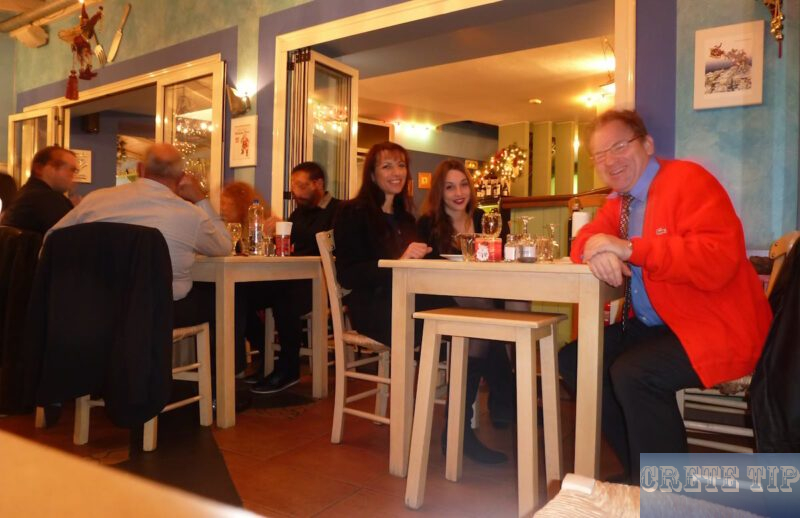The winter in Crete and worth the visit?
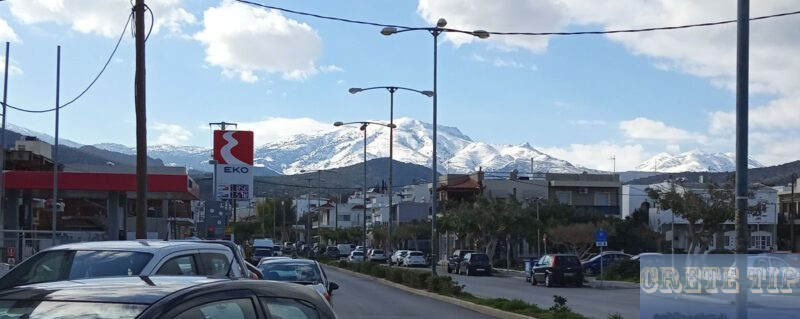
Winter in Crete
In October or November at the latest, there are no more direct flights to Crete and the last visitors leave and from then on, a different rhythm of the clock ticks on the island until March. Some hotels in the cities remain open during the winter months, but there is little winter tourism and the organized beaches are closed.
However, in the winter months the way of life of the people in Crete is completely different from what tourists see in the summer. Life in all places slowly dies out, most stores, hotels and restaurants are closed, except in the larger cities and towns.
The cities and larger villages are nevertheless very lively and busy during the winter months as the locals go about their daily business. On the roads you can see numerous pick-up trucks loaded with olives, firewood or livestock, as well as the usual traffic, but rental cars are few and far between.
In the countryside, locals spend their days working the earth or picking olives. It is not uncommon to see shepherds driving their flocks through the small villages, or donkeys loaded with sacks moving up and down from the olive fields. Fishing is also still practiced in the coastal villages.
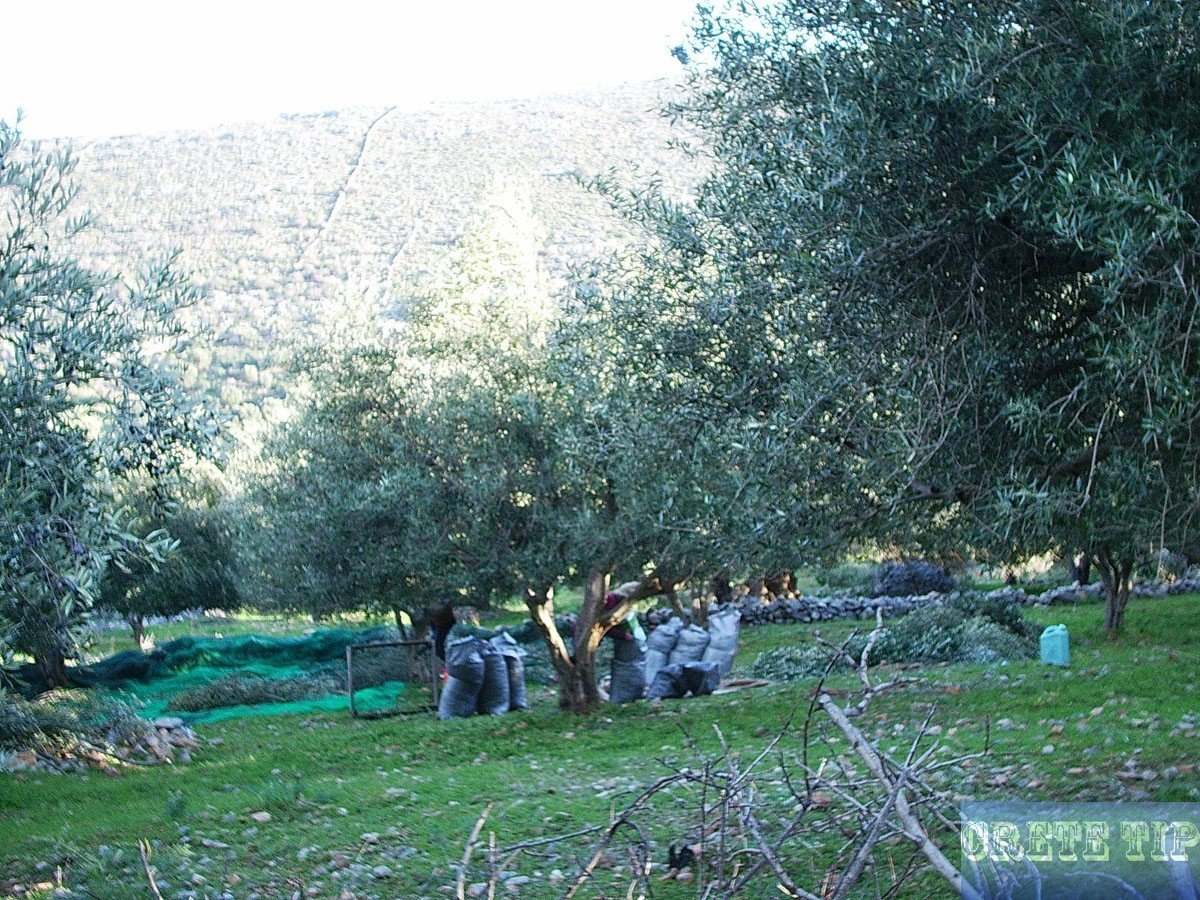
Already from September to the end of February in most areas of the island can be hunted with shotguns and hunting dogs, which is a controversial but popular pastime of Cretans. It is mainly during this period when migratory birds from Northern and Central Europe migrate to Africa, where quite a few of them end up in the cooking pots of the islanders; as well as hares, rabbits and other animals which are on the shooting lists.
The Cretans also devote themselves to their fields in order to harvest their olives and oranges. Almost every Cretan family owns at least one olive grove on the island. The weekends of the urban population are often spent outside the cities, as people go to their ‘horio’ (village) to harvest their olives or to visit relatives.
Nightlife changes from the summer scene with beach bars and outdoor taverns to trendy cafés and restaurants in town and cozy village cafés and taverns with wood-burning stoves or open fireplaces.
Winter weather is not as severe as in the rest of Northern Europe, and temperatures range from beautiful sunny days of up to over 20 °C to lows of around 2 °C at sea level.
October or November sees the first rains, but the wettest and coldest months are usually January and February.
The weather is changeable, and November and December – mostly around til Christmas – are typically quite mild. During the winter months, Crete experiences very heavy rains – in stark contrast to the drought season of summer – and spectacular storms, but eventually the sun always comes out and there are also wonderfully warm sunny days.
In addition, during January there is a short, but all the warmer, so-called ‘mid-winter summer‘, which occurs regularly due to climatic phenomena and can raise temperatures to over 25 °C.
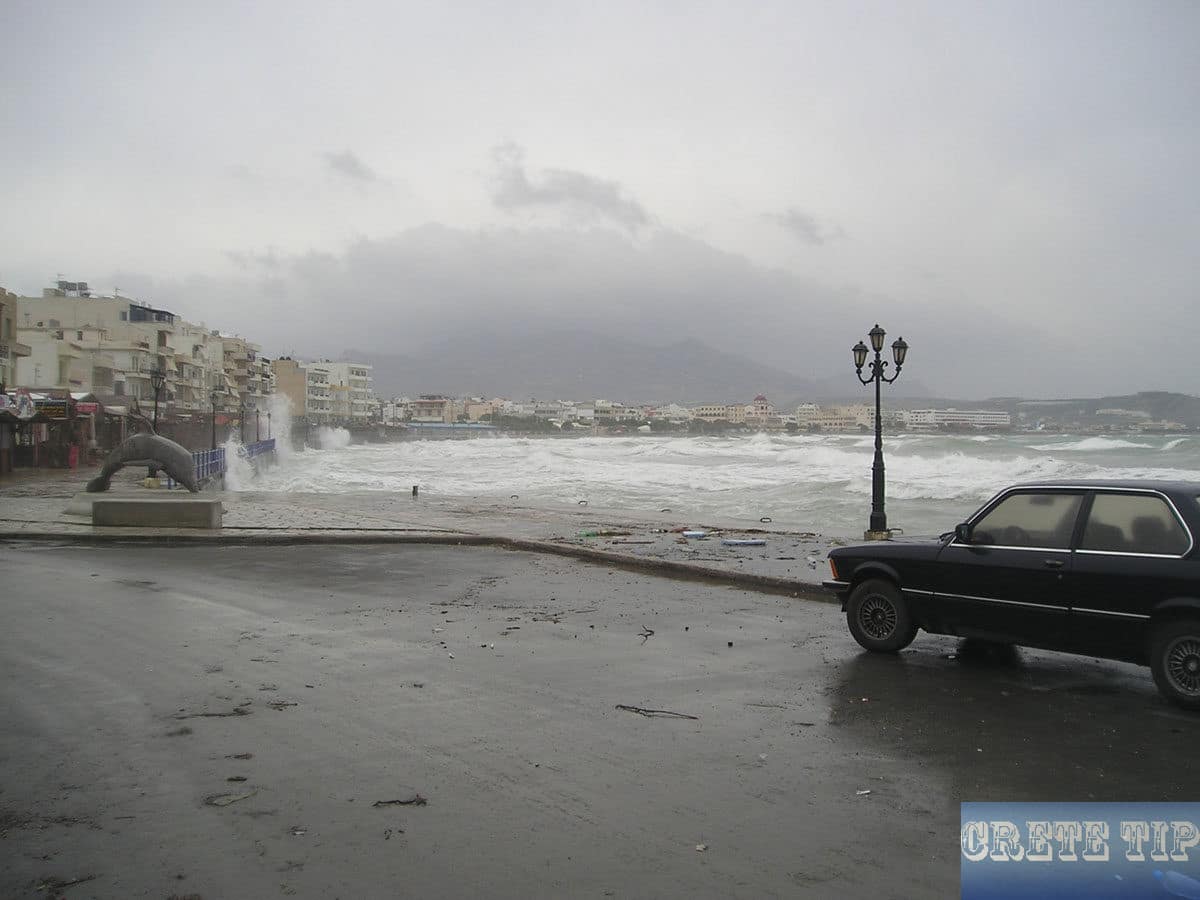
In low-lying plains or by the sea it snows very rarely, but on the higher mountains and on the plateaus you can see the white peaks. In the mountain villages up to the Lasithi plateau snow falls regularly, and the White Mountains in the west are usually covered with snow from November to April. If you happen to be in Crete in winter, a trip to the snow is recommended, although snow chains, which are quite rare here, should definitely be fitted when touring by car.
In winter, on sunny days, the sky is wonderfully clear and blue, so that fantastic photos can be taken on these wonderful winter days – often much more beautiful than in the dry summer months, which are typically hazy and dusty due to the heat, and which the majority of visitors to Crete only know.
Since the island is not so crowded by visitors at this time, many photos on this website are actually also taken between autumn and spring !
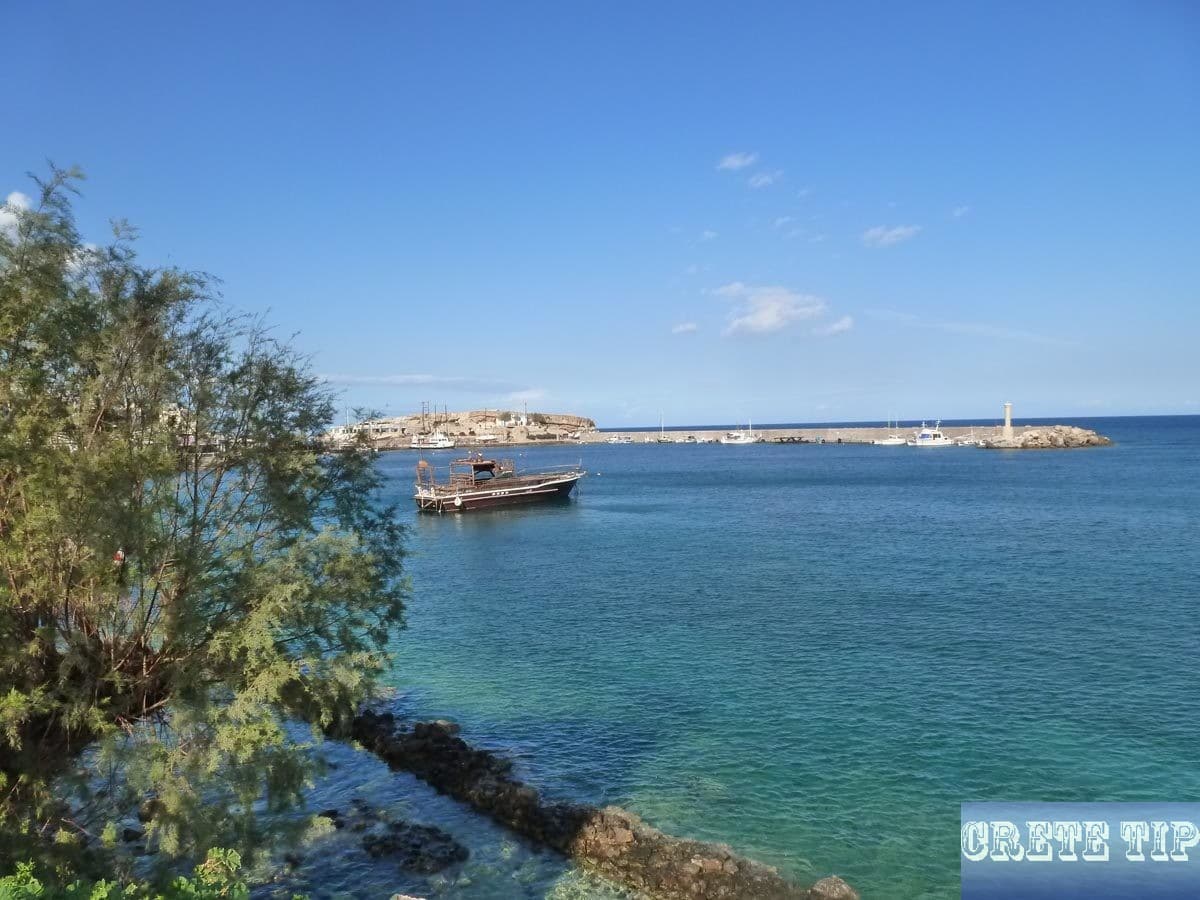
The most colorful months are in spring, when the fields and mountainsides are full of wildflowers such as daisies, orchids, geraniums, anemones, tulips, cyclamen and irises. Herbs such as sage, oregano, rosemary and basil also abound.
People are like the weather – as soon as the days get longer and warmer, life in the villages begins to revive, and you can see everyone preparing their stores and businesses to welcome summer visitors.
Visiting Crete in winter
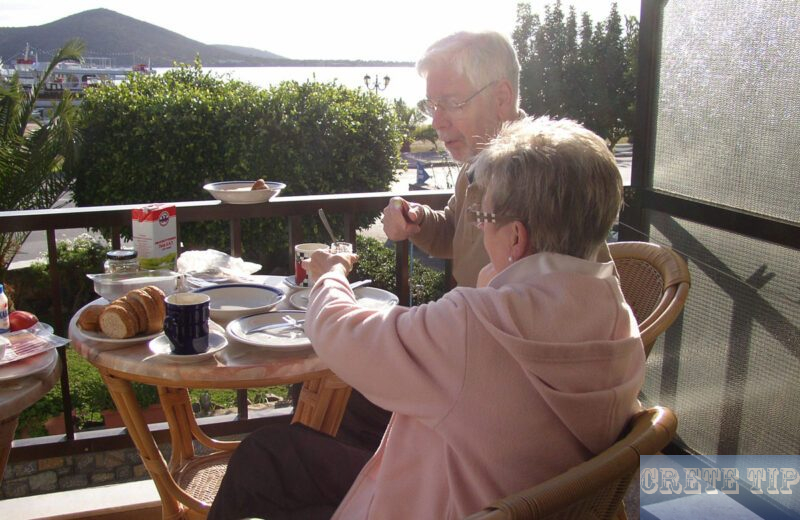
Visiting Crete in winter is a great way to escape the much colder climate of Central and Northern Europe and enjoy the culture and history of one of Europe’s most popular islands – and without having to deal with the hordes of tourists who come in summer !
However, not all tourist attractions are open during this period. The important ones, such as Knossos or the major museums in the cities, very much so, but others are closed – or if you are lucky, open and free to visit without any entrance fees.
Probably most winter visitors, however, will underestimate how cold it can be in Crete in winter. It doesn’t get very cold, but it already corresponds to autumn in Central Europe. Therefore, one or the other may need a pair of gloves and a hat. One or two sweaters, leather jacket or warm coat for very cool, stormy days are also recommended.
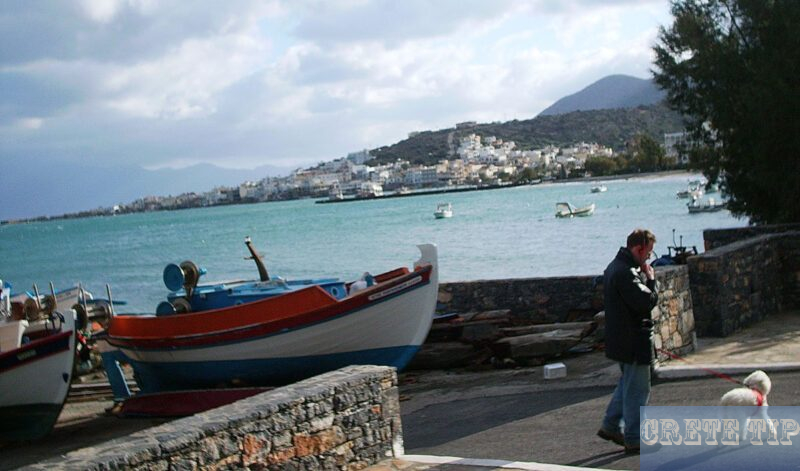
Because the real problem for most visitors will be that they will be very cold at night, because most hotels or accommodations are primarily tailored to the summer and offer few heating options. The concern is usually exacerbated by the fact that on Crete is not built according to Central European standards winter-proof and insulated and there are often many draft holes, which is then again in the summer of course advantageous. This typically ends in disappearing as quickly as possible into bed at night under as many blankets as possible.
Since the island is as far north of Egypt as it is south of Europe, winter temperatures remain relatively warm. The average maximum temperatures are generally 15 to 16°C and the average minimum temperatures are 9 to 11°C from December to February, although there can of course be outliers in both directions that can last up to about a week.
Therefore, you should check the expected weather for the time of your planned stay before you start packing for Crete. In any case, to be on the safe side, take a few things for cold weather.
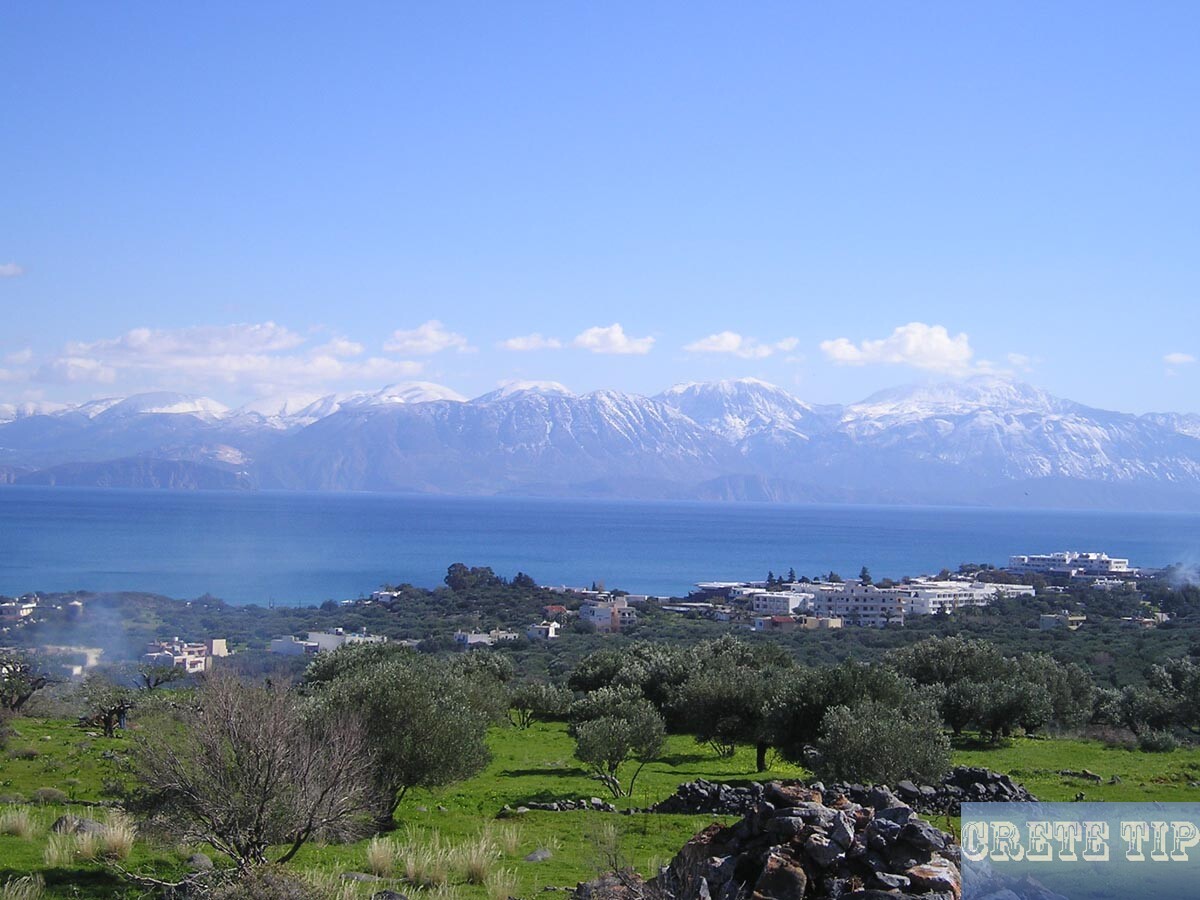
If you are indeed looking for snow, you will be pleased to hear that there are even opportunities for skiing and winter sports in the mountains of inland Crete.
Even though you’ll probably want to forgo swimming at the beach – unless you like swimming in cold weather in equally delicate cold seas – there are plenty of opportunities to do something interesting in Crete even in winter.
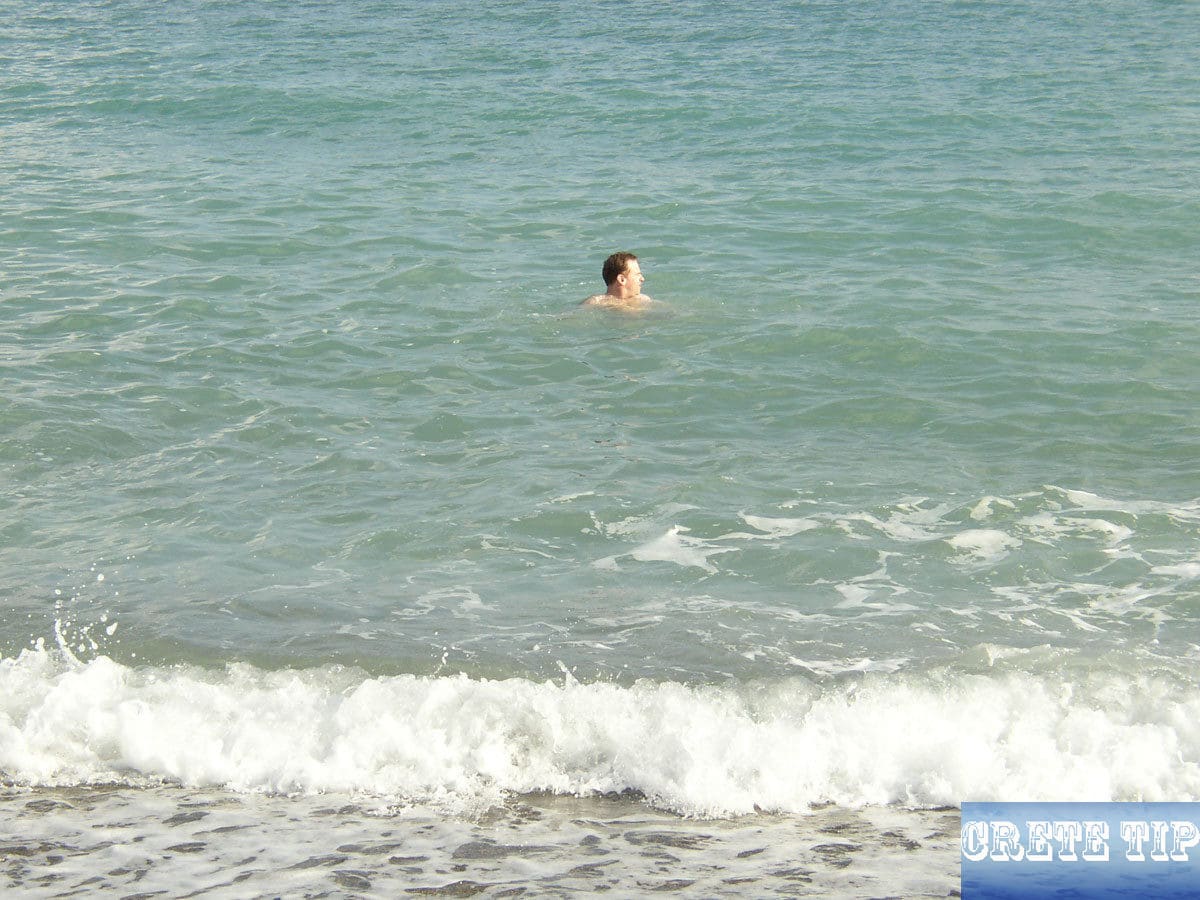
Some suggestions for winter activities
Winter Hiking
Since Crete is warmer than mainland Greece, hiking is mostly excellent all year round, provided you dress appropriately. However, it is preferable to choose the nicer, sunny days for hiking, and furthermore, some hiking routes are closed or hardly accessible in winter for safety reasons, for example the Samaria Gorge.
It is also possible to walk the famous European hiking route E4 and there are also organized group hikes. Such tours are offered all year round near Heraklion and from Chania.
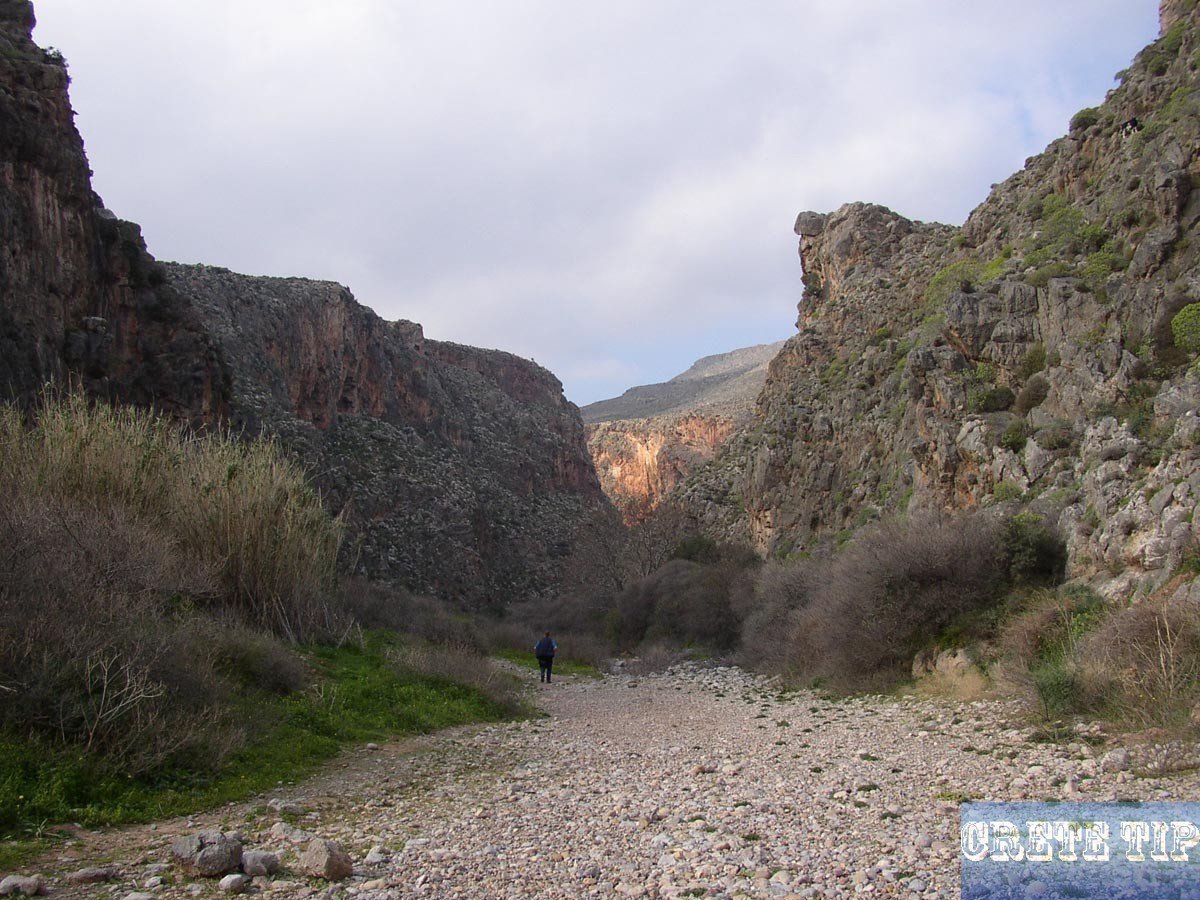
Ski touring in the mountains
Although Cretan ski resorts are not as well known as others in the Balkans, many Cretans are enthusiastic about ski mountaineering – a sport that combines mountaineering and skiing.
It’s not for the faint of heart, so make sure you arrive well prepared and with the right equipment. Here you can find some good information for ski mountaineering in Crete.
There are also ski tours or ski lifts to traditional ski slopes in the mountains in winter.
Car trips to the countryside
If you are not driving in the mountains or on remote slopes, you can still find good road conditions in Crete in winter.
You can still get rental cars in the larger towns and at the airports to explore the many of the smaller villages in the south of the island, which are not as easily accessible by bus as the towns in the north.
Since Crete is cool, but not really cold or snowy outside of the mountains, you can expect to be able to drive across the island comfortably virtually all year round. And since there are far fewer tourists outside of the usual season, this is a great opportunity to get a rental car at a great price.
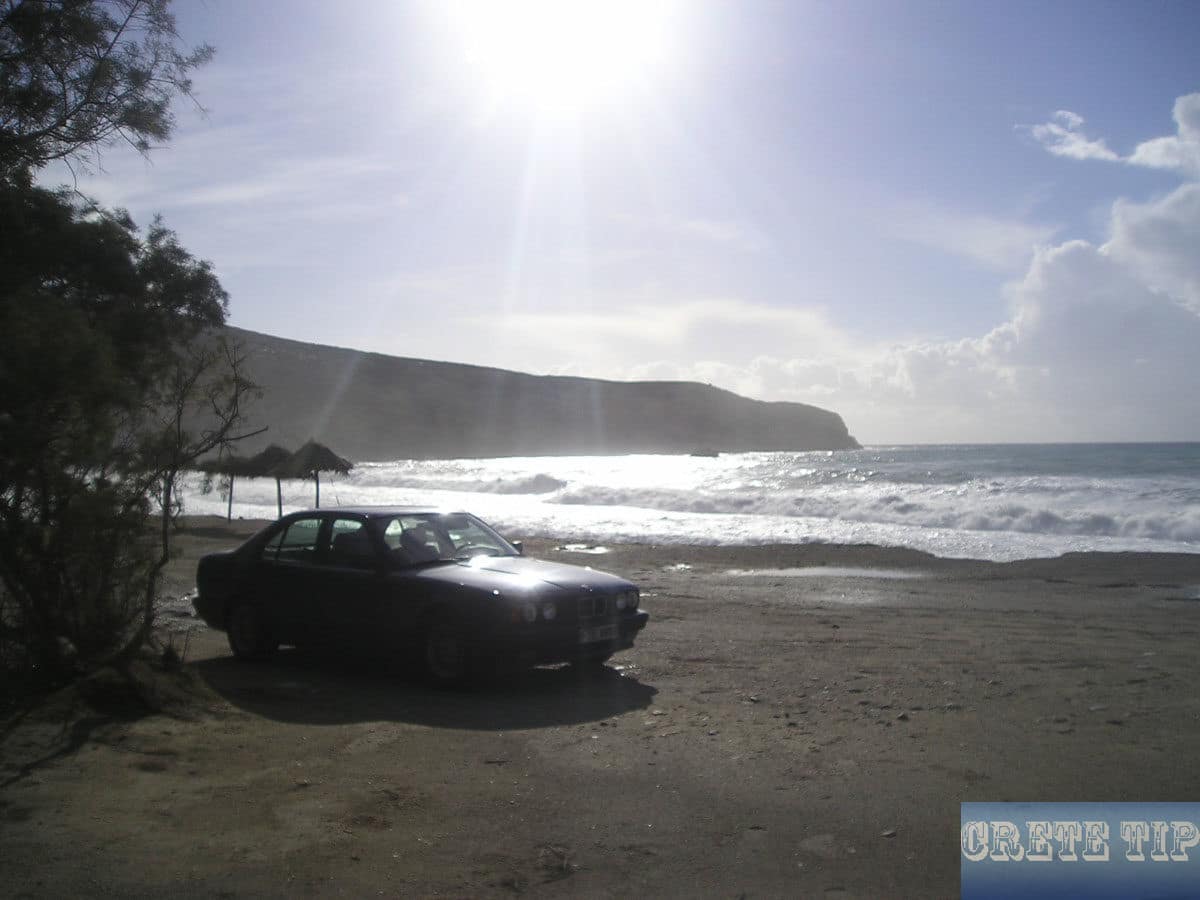
Picnic on the beach
It’s not too fun to swim in the sea around Crete in winter, but you can still enjoy the beautiful beaches of the island with a wonderful beach picnic in winter. The advantage is that the beaches, which are usually crowded, are almost empty, so you can have them all to yourself !
It is recommended to bring your own food, snacks and picnic equipment, as most of the stores on the beaches will be closed.
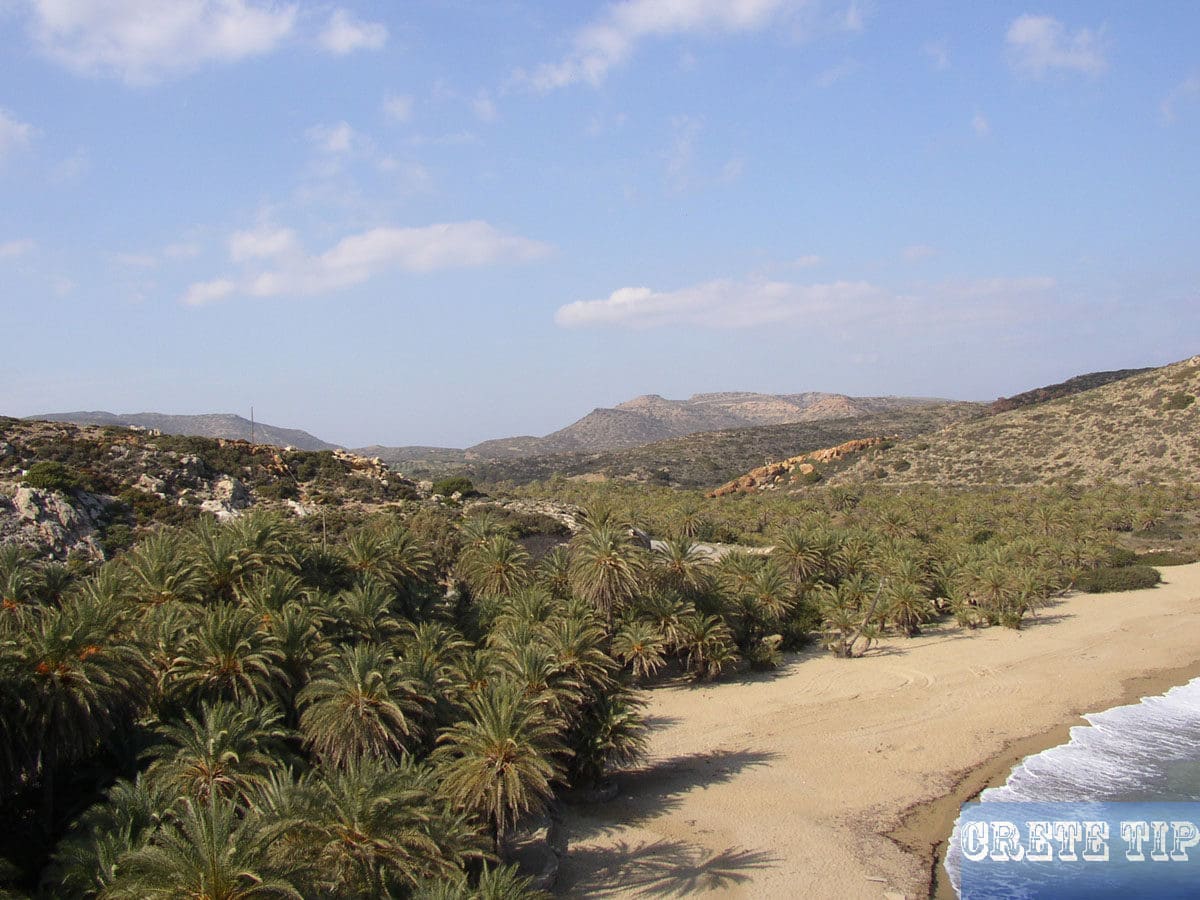
Visiting museums
If you want to escape the cold for a few hours, you can visit one of the excellent museums in Crete.
The most famous is the Archeological Museum of Heraklion, considered one of the most important museums in Europe. The collection includes treasures from the Minoan civilization and a full-scale replica of the Palace of Knossos. Expect to spend ninety minutes to two hours there before you really see everything.
The Archaeological Museum of Chania houses a collection of historical objects from western Crete dating back to the Neolithic period, with an emphasis on the Minoan and Roman eras. The visit takes about an hour to ninety minutes.
The Archaeological Museum of Rethymno, although smaller than the other two museums listed here, is a perfect place to view objects from around the city. Among the main attractions are objects from the Roman period. You should expect to spend thirty minutes to an hour there.
City tours
City tours in Heraklion, Chania, Rethymno or Aghios Nikolaos are easily possible even in winter.
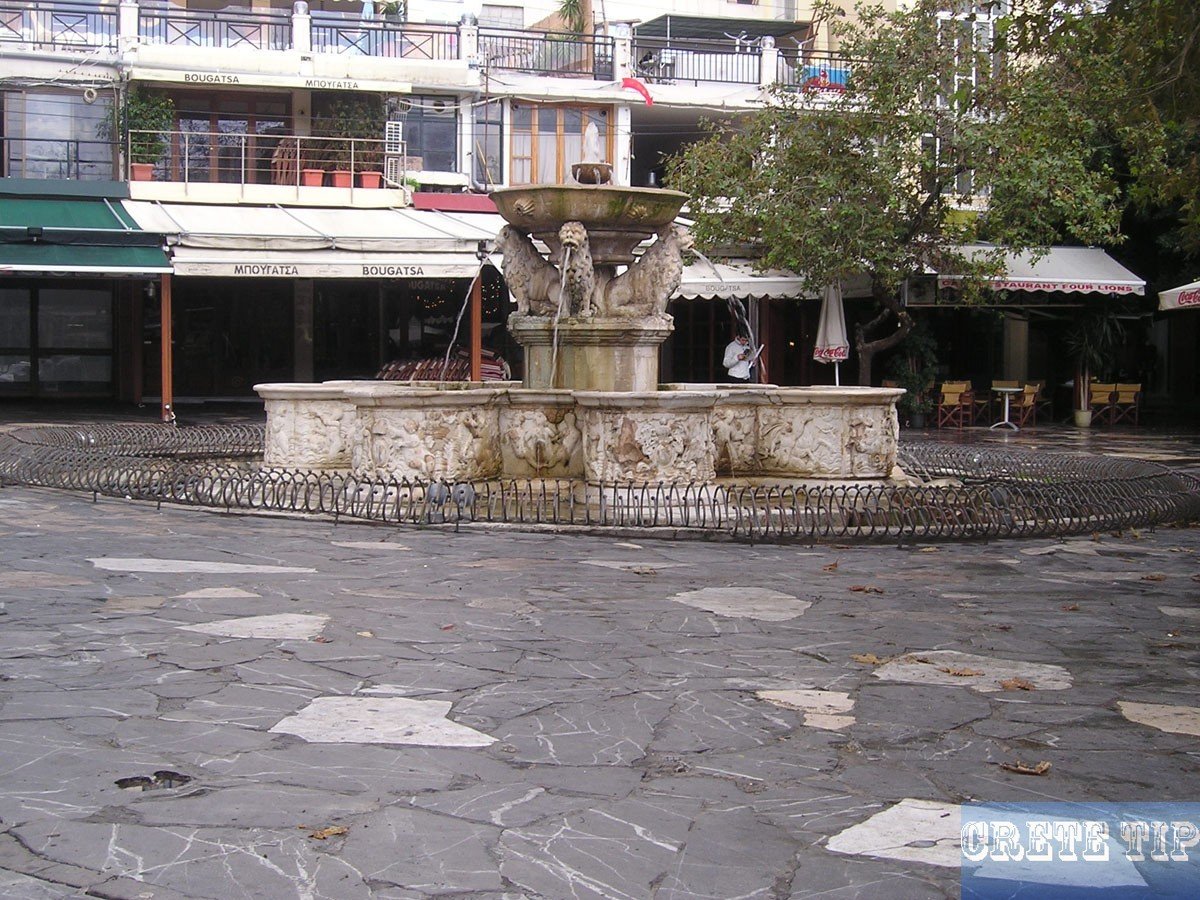
For example, Chania is a charming city all year round, but if you want to explore the beautiful architecture without the hordes that come in summer, you should come in winter !
Highlights at the port include the Firka fortress, the Venetian lighthouse and the colorful houses right on the waterfront. At this time of year you can take enough time to explore the town without stress and enjoy the local cuisine in one of the taverns.
Rethymno in winter is also fabulous, as the compact town is infinitely more pleasant without the many tourists completely overcrowding the best places and sites in town. Highlights include walking around the Fortezza, exploring the Venetian harbor and visiting the Egyptian Lighthouse, especially at the ‘Golden Hour’.
Archaeological sites
The Palace of Knossos is one of the most famous archaeological sites in Europe, but in the summer it is insanely crowded. So if you want to visit the palace without having to fight your way through the crowds, you should do it in the off season !
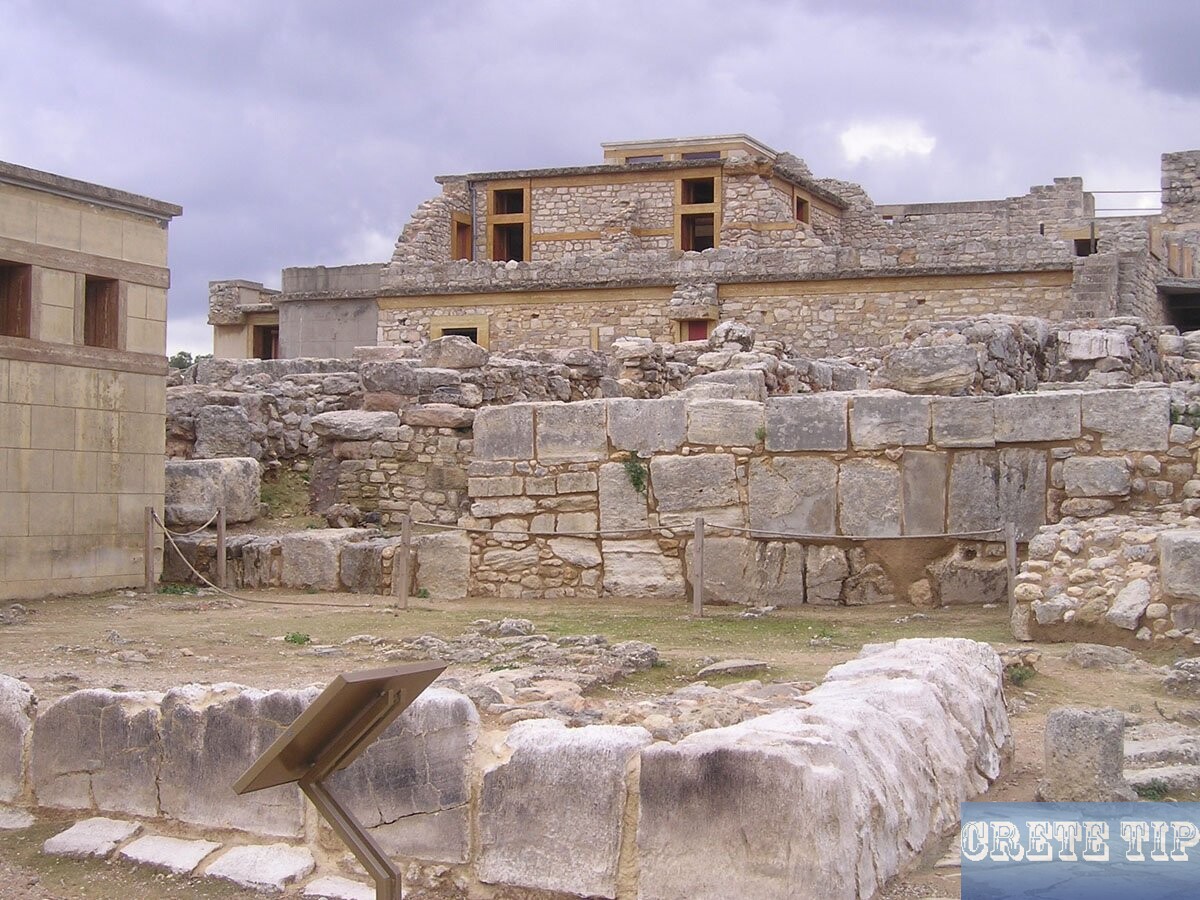
Still, you should get there early to marvel at the palace with only a few other visitors. However, in winter it is also possible to visit at any other time of the day during opening hours (note: shorter in winter than in summer), as this archaeological site is open almost all year round.
In midsummer, any visit there becomes a sweaty affair in the scorching sun, while on the other hand it is much more pleasant on a nice cool afternoon in December or January !
In my experience, the palaces of Festos and Zakros, the Roman ruined city of Gortys, the Minoan village of Gournia and many other archaeological sites are also open all year round, with discounts or even free entry often available in winter.
On the other hand, the Doric hill town of Lato or the Palace of Malia, among others, are mostly closed in winter.
Christmas markets
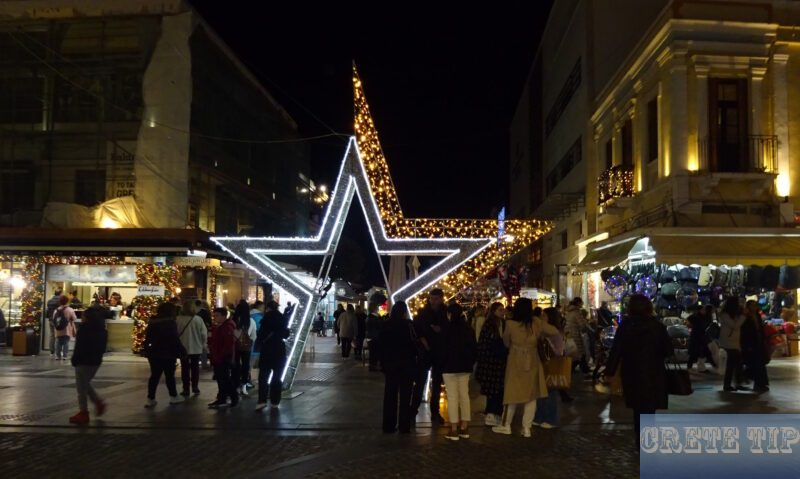
While Crete shouldn’t be called a Christmas destination per se, if you’re in Heraklion in December, be sure to stop by the city’s Christmas market. It’s small, but there’s an ice skating rink for kids, stalls selling local handicrafts, and an overall festive atmosphere.
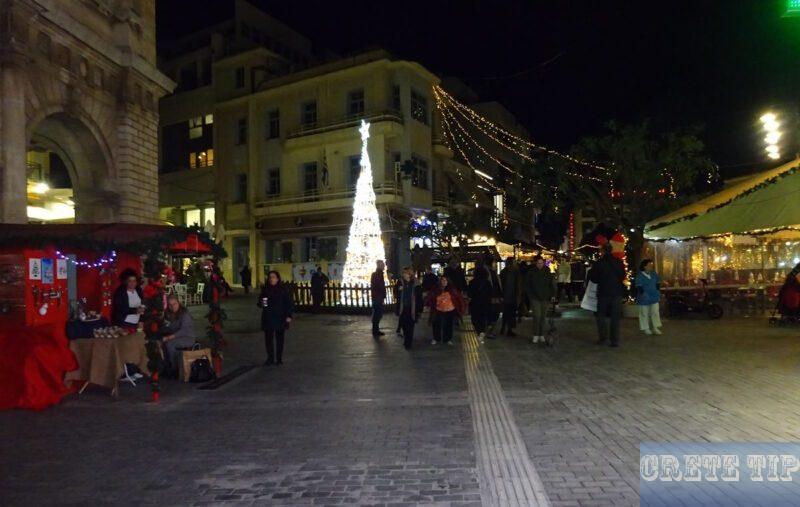
Many other cities and towns in Crete also have small markets and lovely Christmas ribbons, decorations and lightings, especially around the important churches.
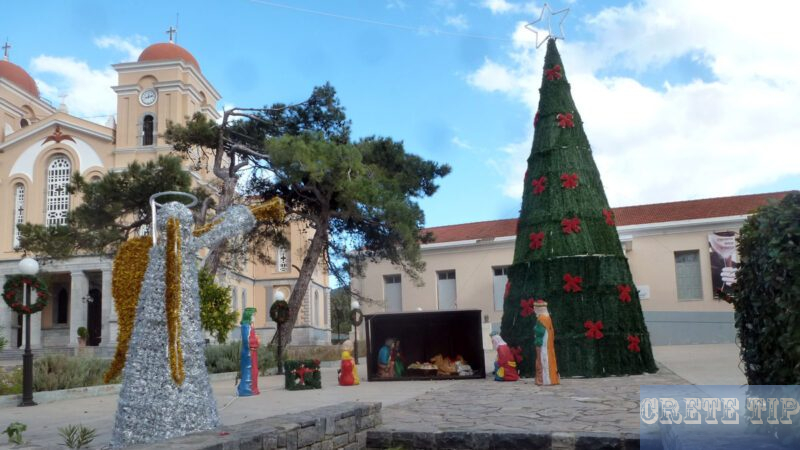
Restaurants and raki bars
Most restaurants in the larger cities and towns are open during the winter. Only in the tourist strongholds is the vast majority, if not all, closed. Especially right after the tourist season, around November, you have to expect that for four weeks many restaurants will be closed for the time being, because their operators want to recover from the summer stress.
The amazingly good Cretan Cuisine has its charms, plus there are also a few good international restaurants and delicious bakeries and cafes.
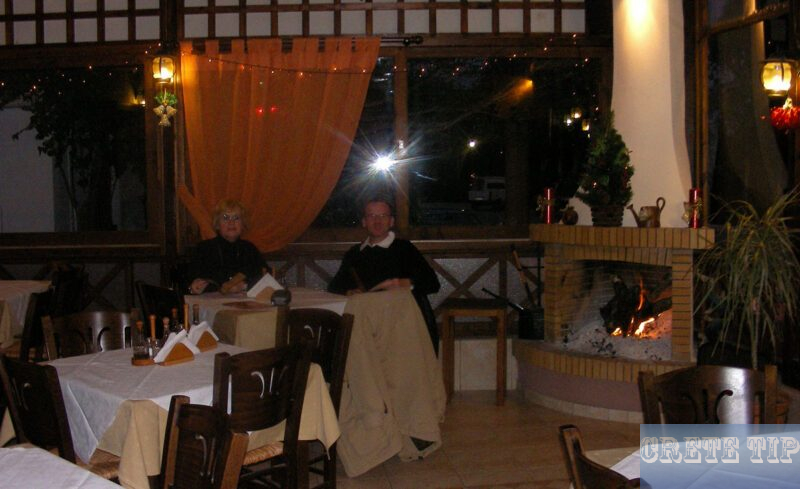
It is common knowledge that it is almost impossible to visit Crete without getting raki in almost every taverna or restaurant on the island.
Unlike typical tavernas, the raki itself is the linchpin in a ‘rakadiko’. Instead of individual meals, you order small plates to share with others at the table and drink raki with them.
Raki is also good against the cold and is said to have averted many an upcoming cold.
One of the most famous raki places on the island is ‘1600 Raki ba Raki’ near the Rimondi fountain in Rethymnon.
The previous years with snow in Crete
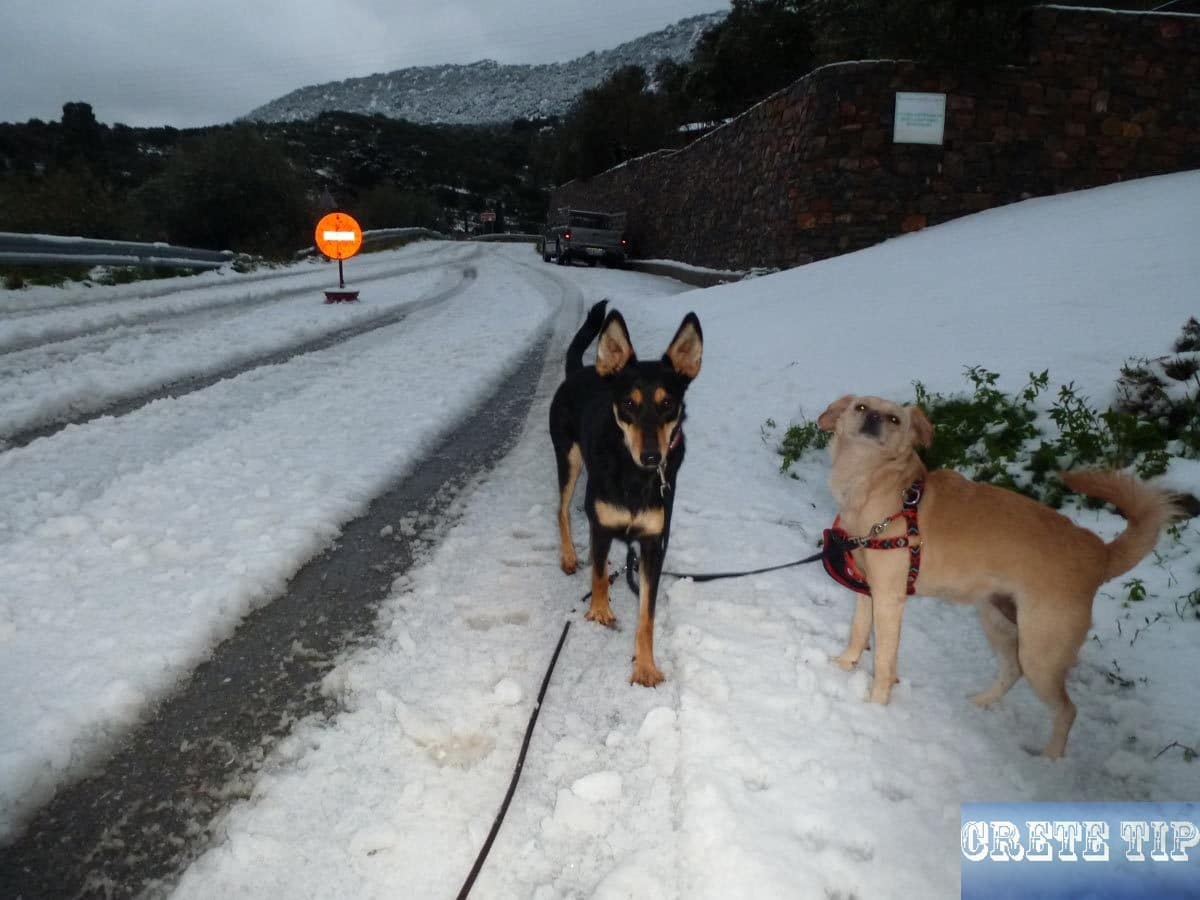
The last past winters with snow on Crete.
Snow on Crete in 2015
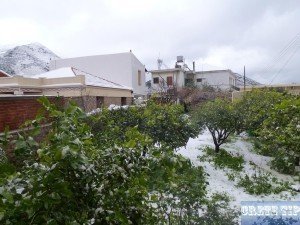
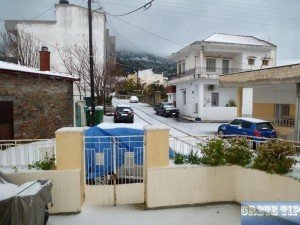
Snow on Crete in 2017
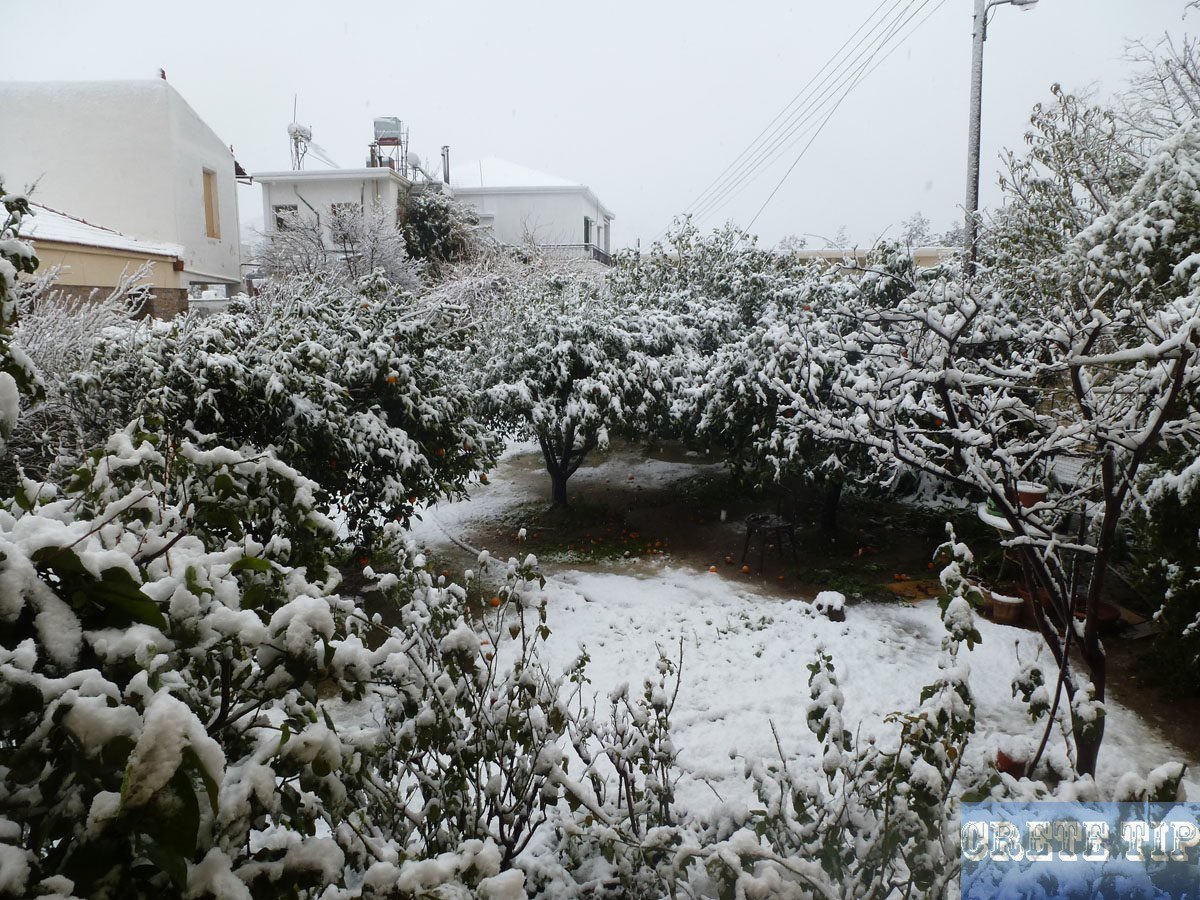
The winter 2016-2017 is a particularly hard one on Crete. So there was already ‘white Christmas’, ‘New Year’ and on January 8 it was so long and strong that the two Rescue puppies Simba and Ali had their first ‘snow baptism’ in the mountains.
Snow on Crete in 2019
Cold greetings Crete with the first snow of this winter on 8 January 2019 (and the first since 2017 here) !
Snow in Crete in 2022
It took three years until significant snow was seen here again, even to the beaches. Actually, the heaviest snowfall had been announced for January 26, of which I wanted to take pictures from outside the house. It did not come then nevertheless, so that most snow comes as on the following pictures from 24-25 January 2022.

